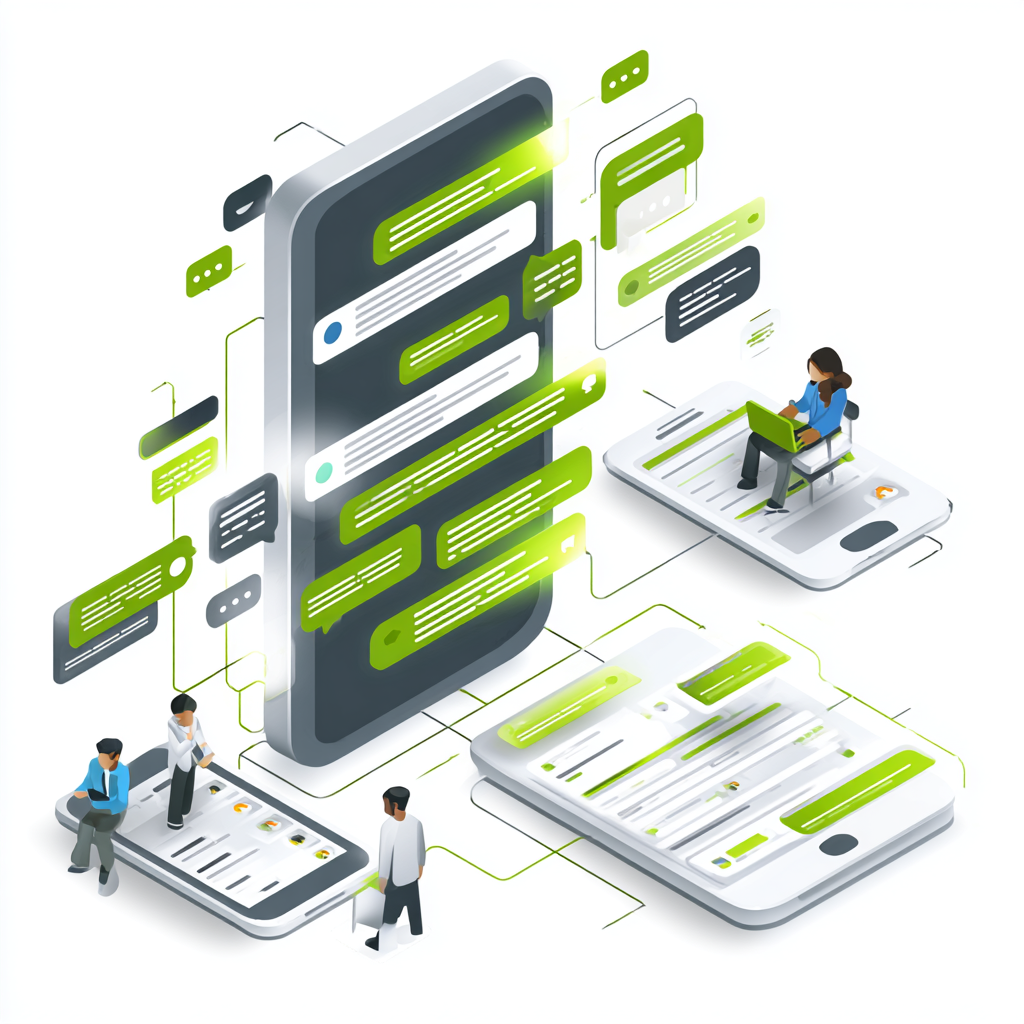Secure USSD transactions are key to maintaining the integrity of your brand. Unstructured Supplementary Services Data (USSD) is like the unsung hero of communication technologies.
Operating through GSM networks, it delivers a range of services that many of us use daily without even thinking about it. USSD is the hardworking behind-the-scenes facilitator of instant interactions, offering immediacy that SMS cannot quite match.
While SMS involves storing messages and then forwarding them to their destination, USSD provides a direct, immediate experience that allows for things like checking your bank balance, transferring money, or even booking tickets for your favorite movie.
Despite its many benefits, USSD has its risks. Let’s examine some in-depth strategies and practices that can help fortify USSD interactions and ensure that every transaction remains as secure and trustworthy as possible.
What makes a USSD transaction secure?
Below are what make a USSD transaction secure:
Authentication: Going beyond the basics
Authentication is crucial for securing USSD transactions. It is about making sure the person using the service is who they say they are.
When someone does a transaction using USSD, verifying their identity is the first step to keeping things safe. Usually, a PIN (Personal Identification Number) is used to authenticate a user.
However, a way to make this even safer is to use multi-factor authentication (MFA). MFA adds extra layers of security by checking several things before allowing the transaction.
Here is how MFA works in simple terms:
- Something you know: This could be a password or a PIN that only the user should know.
- Something you have: This might be a phone or another device that receives a one-time code (OTP) via text or app. This code changes every time it is used, making it harder for someone to steal it.
- Something unique to you could be a fingerprint, facial recognition, or other biometric data unique to the user.
For example, if you are doing a banking transaction through USSD, you might first enter your PIN to start the process. Then, to add another layer of security, you will receive a one-time code on your phone that you need to enter to complete the transaction.
Data encryption: A vital layer of protection
USSD communications lack built-in encryption, making adding this security measure ourselves essential. Encryption means changing information into a code so only people with permission can access and understand it.
For example, before any data is sent out, it can be encoded into a secure format using algorithms like AES (Advanced Encryption Standard) or RSA (Rivest-Shamir-Adleman). This encryption process protects sensitive information by making it unreadable to unauthorized parties.
Here is how encryption works in detail:
- Encrypting data: Before any data is sent out, it is encoded into a secure format. The encryption process protects sensitive information by making it unreadable to unauthorized parties.
- Server-level encryption: Encrypting data at the server involves encoding the information before it leaves the server. This step is crucial for safeguarding personal and financial information transmitted over networks.
- End-to-end encryption: This method ensures that data is scrambled on the sender’s device and can only be unscrambled by the recipient’s device. This means the data remains secure and inaccessible to anyone who might intercept it during transmission.
Session management: Keeping it secure
Managing user sessions properly is crucial to preventing unauthorized access. When using USSD services, it is essential to ensure that sessions are not left open unintentionally, as this could lead to security risks.
Here’s how to manage sessions effectively:
- Session timeouts: Implementing session timeouts means that if a user is inactive for a specific time, their session will automatically end. For example, suppose a user does not interact with the USSD service for a set period.
- Notification before timeout: To enhance user experience and security, consider sending a notification to users before their session times out. This alert can inform users that their session is about to expire, allowing them to continue if they are still using the service.
Monitoring: staying ahead of threats
Effective monitoring is critical to securing USSD transactions and catching potential threats before they become serious problems.
Reviewing transaction records helps identify unusual patterns or activities that could indicate fraud. Using advanced tools for analyzing transaction data can improve monitoring efforts. These tools look for subtle signs of irregularities that might not be immediately obvious.
User education: A crucial component
User education is a critical element in maintaining transaction security. While service providers play a significant role in implementing security measures, users are also responsible for understanding and following best practices.
Helping users understand the importance of keeping their PINs and other sensitive information private and how to spot and report suspicious activities can significantly enhance their ability to protect themselves.
Securing gateways: Protecting the communication link
USSD gateways are critical as the communication bridge between users and servers. To protect these gateways from potential cyber-attacks, it is essential to use firewalls and intrusion detection systems.
Firewalls act as barriers, filtering out malicious traffic before it reaches your servers. Intrusion detection systems monitor network activity for signs of suspicious behavior, alerting you to potential threats.
Validating inputs: Preventing exploits
Input validation is crucial for maintaining the security of USSD services. Proper validation ensures the data users submit meets specific criteria and is free from malicious code.
For example, if a USSD service requests user input for a transaction, it should only accept predefined and expected inputs. This prevents malicious users from entering harmful data that could exploit system vulnerabilities, such as SQL or command injections.
Reporting channels: Making it easy
Having secure and straightforward methods for users to report security concerns is essential for maintaining system integrity. A well-established support system should be available to handle suspicious activity reports promptly.
This means users should have clear instructions on reporting issues and accessing responsive support.
Secure coding practices: Building a solid foundation
Secure coding practices are fundamental during the development phase to prevent future vulnerabilities. Developers should avoid hardcoding sensitive information, such as passwords or API keys, into the code and instead use secure methods to manage these secrets.
Protecting against SIM swapping: A growing threat
SIM swapping is a significant threat in which an attacker takes control of a user’s number, potentially gaining access to sensitive accounts.
To protect against this threat, measures should be implemented to detect unusual SIM card activity, such as changes in SIM card usage patterns.
Rate limiting: Preventing abuse
Rate limiting is a technique to control the number of transactions processed from a single user or IP address within a specific timeframe.
This practice helps prevent abuse and reduces the risk of automated attacks. For example, if one IP address attempts to initiate numerous transactions quickly, rate limiting can restrict the number of allowed attempts.
Why secure USSD payment processing matters
Here are some of the reasons why secure USSD payment processing matters:
Building trust
Adequate security measures build trust, ensuring users feel confident using your services. When they know their data is protected, users will continue using the service.
Meeting regulatory requirements
Financial transactions must comply with various regulations. Securing USSD transactions helps ensure data protection and compliance with financial regulations, avoiding legal problems and potential fines.
Reducing financial losses
Adequate security measures help prevent unauthorized deductions and reduce the costs associated with fraud investigation and user compensation.
Maintaining system integrity
Maintaining the integrity of the USSD payment system is crucial. Strong security measures prevent tampering with transaction data and ensure that transactions are processed accurately. Regular security assessments help keep the system reliable and credible.
Enhancing service reliability
Reliable services are more likely to retain users. When users are confident that their transactions are protected, they are more likely to use the service consistently. Implementing robust security practices helps ensure the service remains stable and trustworthy.
Protecting against unauthorized access
Effective authentication methods are key to preventing unauthorized access. Multi-factor authentication and regularly updating security protocols help keep accounts secure from malicious actors.
Improving user experience
A secure payment process contributes to a positive user experience. When users are assured of the security of their data, they can complete transactions smoothly and confidently. Clear communication about security measures and providing support also enhances the overall experience.
Avoiding reputational damage
Security breaches can damage a service provider’s reputation. Implementing strong security measures helps prevent breaches and protect against adverse publicity. Demonstrating a commitment to user safety reinforces the service’s trustworthiness.
USSD: Securing your business and customer trust
Securing USSD transactions requires a combination of strong technical measures and user awareness. Implementing strong authentication, encrypting data, monitoring transactions, and staying updated with security practices can protect sensitive information and maintain the integrity of USSD services.
Incorporating regular security audits and educating users about safe practices further strengthens the security framework. Prioritizing security in your USSD transactions will help build user trust and prevent fraud. This will ensure a safe and reliable user experience while safeguarding the service provider’s reputational interests.





